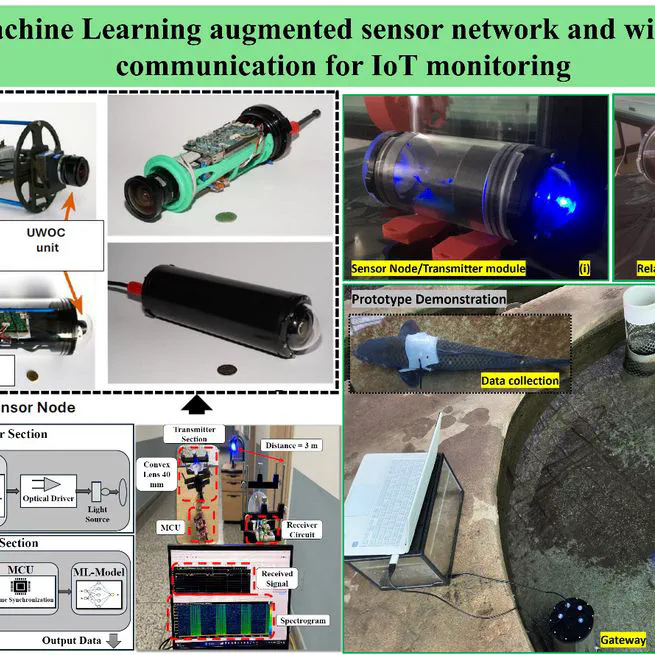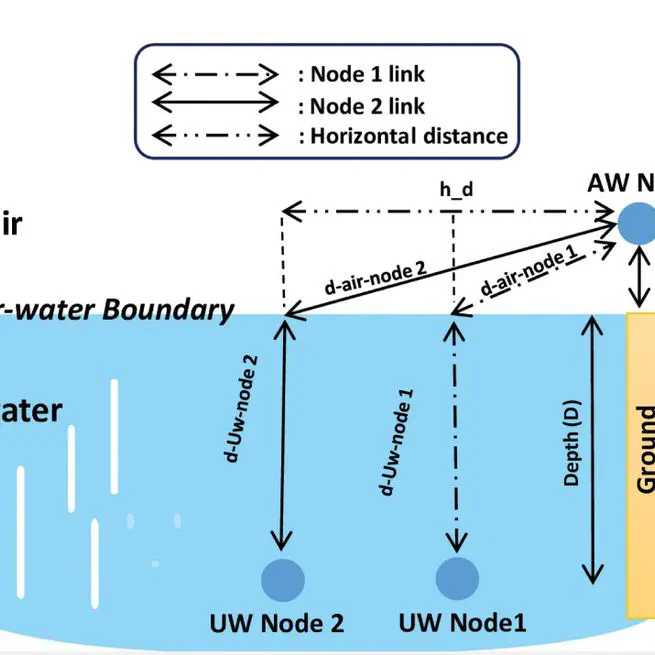
The research introduces an advanced fish movement tracking system that addresses critical challenges in underwater monitoring. By developing a lightweight sensor node integrated with an Inertial Measurement Unit (IMU) and underwater optical wireless communication (UWOC) modem, the system enables real-time data transmission and movement analysis. The technological innovation centers on sophisticated relay performance enhancement through software-based combining techniques like Majority Logic Combining (MLC), Equal Gain Combining (EGC), and Selection Combining (SC). These methods are intelligently integrated into the microcontroller to optimize communication reliability and signal processing in challenging underwater environments. A key contribution is the adaptive communication algorithm (ACA), which strategically exploits combining techniques to improve underwater wireless optical communication performance. The system's prototypes underwent rigorous testing in a 4-meter water tank, validating its feasibility and practical applicability. The research further advances underwater monitoring by developing machine learning models—including LSTM, Spatial Attention, RNN, Transformer, and GRU—trained on comprehensive IMU sensor data. These models analyze complex fish movement parameters, predicting acceleration states with remarkable precision and offering unprecedented insights into aquatic behavior.
Dec 5, 2024

A low-power, low-latency LoRa-based relay was proposed, which enabled underwater communication for the LoRaWAN network. As LoRa was the main component of this design, first, the potential of using LoRa in UW-AW communication is evaluated through theoretical and experimental approaches. Afterward, the link quality was analyzed at the UW-AW channel by examining the RSSI, SNR, and PDR in experimental tests at various depths, horizontal distances, and PHY parameters. Moreover, the challenges of underwater communication utilizing LoRa were studied, and the proposed relay was developed considering these challenges. To evaluate the performance of the relay, in addition to comparing the network latency and battery consumption per packet of the system with and without the relay, the effects of depth and PHY parameters on the link quality of both systems were experimentally examined. The results revealed that the link quality of the UW-AW channel highly depends on the air-water boundary effect, which is why utilizing the relay improved the system performance. In addition, the calculated network latency and battery consumption of both systems revealed that utilizing the relay, accompanied by selecting proper PHY parameters, results in better performance in terms of RSSI, SNR, PDR, and transmission range without delay and power consumption concerns. The proposed relay can enable RF for UWCs and solve the main challenges faced in the IoUT, especially the medium nature effect. In this work, considerable transmissions were demonstrated up to 2.25 m . This enables underwater communication in many applications, such as smart fish farms, river water quality monitoring, water tank monitoring, pollution tracking, and monitoring of athletes in water sports, in addition to applications where moving objects such as ships and divers can suffer from cables. Moreover, the underwater transmission range can be increased significantly by increasing the number of underwater LoRa-based relay nodes that act as range extenders. Therefore, the performance of the LoRa-based relay will be analyzed as an underwater range extender in a future study. Furthermore, delving into the impact of tidal waves on system link quality and relay performance at the water surface, along with a detailed investigation of the blind spot phenomenon, has the potential to pioneer innovative communication techniques between underwater and terrestrial gateways.
Oct 16, 2023